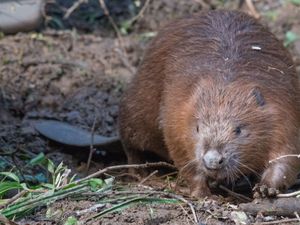New arrival of endangered gibbon is welcomed at Twycross
Leading conservation charity Twycross Zoo has announced a new arrival with the birth of a pileated gibbon.

Timed to announce today (Tuesday) on International Gibbon Day, the infant was recently born at the zoo and has been carefully looked over by a team of expert keepers and veterinarians.
The female infant, who is yet to be named, was born to mother Valentina, who is 25-years-old and 43-year-old father Helmut.

Both Helmut and Valentina are very important individuals within the EAZA Ex-situ Programme (EEP) for pileated gibbons, due to their genetics.
The programme, which runs across zoos in Europe, consists of just 56 individuals and is coordinated by Twycross Zoo. It aims to conserve a healthy population of these animals in zoos, so this latest birth is a real success for the ongoing protection of the species.
Twycross Zoo’s pileated variety live along three other gibbon species in their world-class Gibbon Forest habitat.
The new arrival still spends all her time with her mum, but is becoming increasingly aware of her surroundings. The infant will remain with her parents for several more years as she grows and develops.

Lynsey Bugg, Curator at Twycross Zoo, is the EAZA Ex-situ Programme (EEP) co-ordinator for the pileated gibbon.
She saod:“We’re delighted to announce the birth of a pileated gibbon at Twycross Zoo.
"It’s always a special moment when we welcome any new arrival and this birth is incredibly important as part of the pileated gibbon EEP, which is dedicated to protecting future populations of the species, who continue to face severe threats in the wild.
“As a conservation charity, our over arching aim is to help save the species with whom we share our planet through conservation action.
"We recently unveiled our ambitious new Conservation Strategy, and supporting healthy ex-situ populations of species is one of our six core conservation goals that will help maximise our impact in the fight against extinction.”
The pileated gibbon species is listed as endangered by the International Union for Conservation of Nature (IUCN) and is native to Cambodia, Thailand and Laos. Pileated gibbons are sexually dimorphic (different) - males are black with white hands, feet and face crest, while females are white-grey with a black cap and chest.

The species faces a number of threats in the wild, most critically deforestation and habitat loss, as wild forest is converted into farmland or used for human developments. Pileated gibbons are also threatened by hunting for meat and the pet trade.




